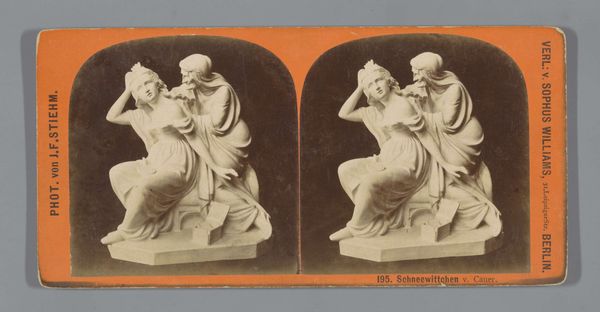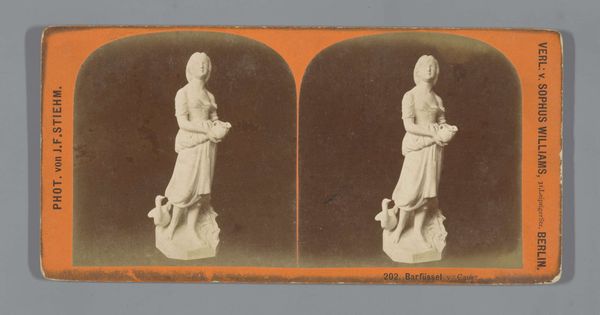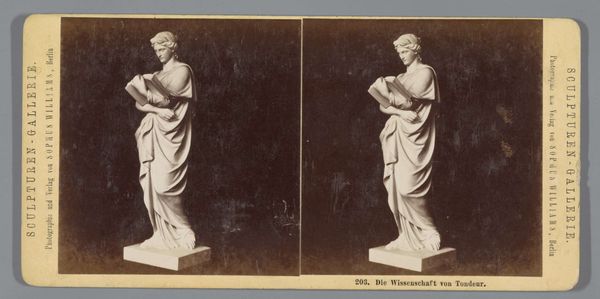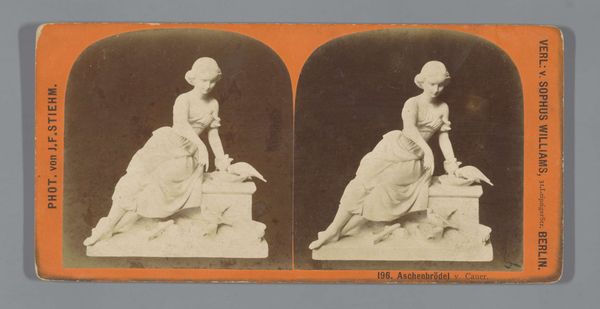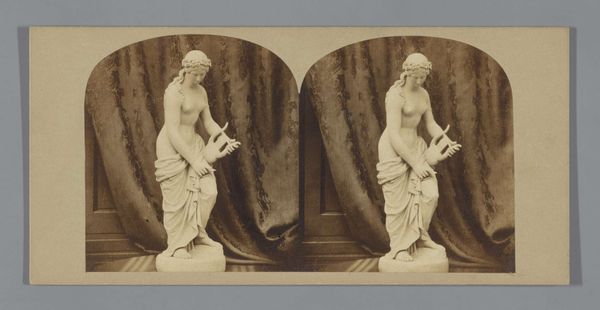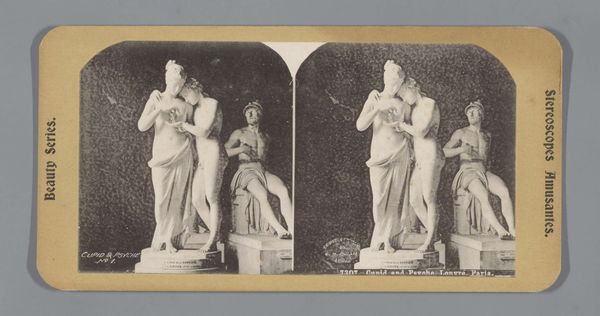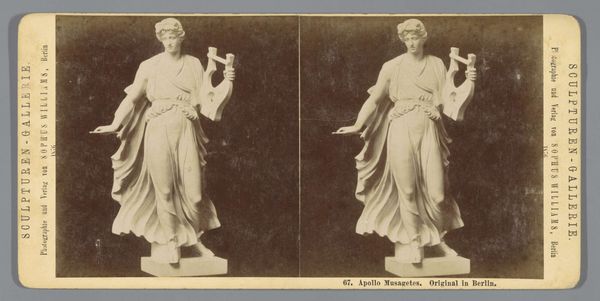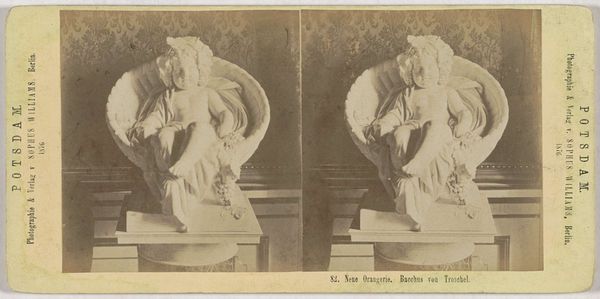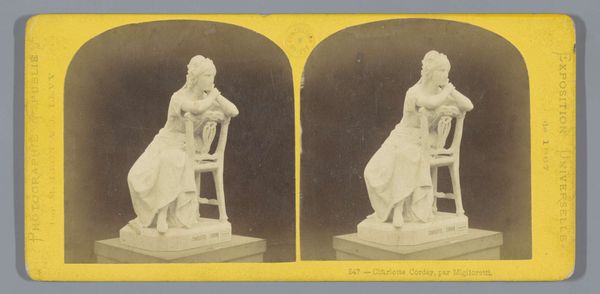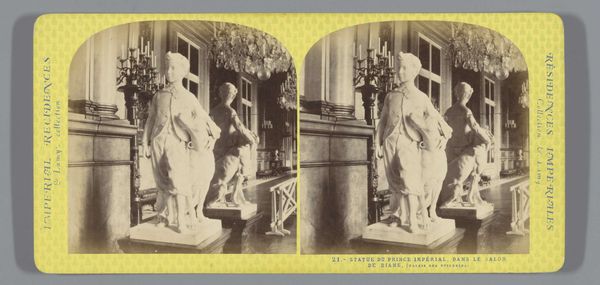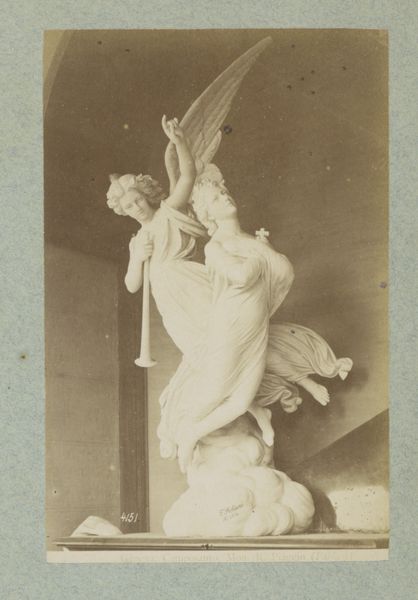
Dimensions: height 84 mm, width 175 mm
Copyright: Rijks Museum: Open Domain
Curator: We’re looking at an image of a Neoclassical sculpture. The title is "Sculpture of the goddess Hebe," photographed in 1882 by Sophus Williams. Editor: It evokes a sense of idealized serenity, doesn't it? The smooth marble and the flowing drapery create such a visual harmony. The composition, with its emphasis on verticality and the slight contrapposto pose, gives the figure a dignified presence. Curator: Absolutely. Hebe, in Greek mythology, is the goddess of youth, often depicted as the cupbearer to the gods, replenishing their immortality with ambrosia. This particular representation taps into a longer visual tradition of youthful innocence and divine grace. Notice how she raises a pitcher, maybe about to pour the sacred beverage. It reinforces her role as the bringer of eternal youth. Editor: I'm drawn to the lines created by the fabric. There's a masterful contrast between the static pose and the dynamic suggestion of movement in the folds. That subtle tension brings the marble to life. But the monochrome of the photographic print somewhat mutes the texture of the marble; I long to feel its coolness. Curator: Photography, though, granted wider access to canonical works like this. The dissemination of classical ideals throughout society was an agenda in itself. Copies of ancient statues reinforced a certain social order and ideas of beauty, grace, and power throughout the rising merchant class of the nineteenth century. Editor: Yes, the photograph is, itself, a copy removed from the original's aesthetic experience. The surface detail— the interplay of light and shadow – seems somewhat flattened to my eyes. Curator: True, yet think of this photograph as a document capturing not only form but also an era's understanding and desire to re-engage with antiquity. It echoes our current impulse to recapture meaning through visual cues of cultural memory. Editor: In the end, viewing this work opens us to an aesthetic past. It forces a dialogue with the canon. I'll leave here pondering this Hebe's continuing grace. Curator: And I, on how symbols like Hebe shift and settle into the cultures that adopt them. Thanks for joining me!
Comments
No comments
Be the first to comment and join the conversation on the ultimate creative platform.
